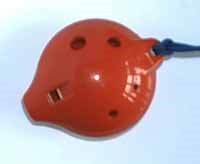RETURN TO THE RIVER KWAI (XII)

The name of the river is also incorrect.The Thais call the river ‘Khwae Yai’which merely means ‘the large tributary’, and is not a name as such.The word for ‘tributary’ is pronounced ‘Kway’. In 1942 ,says Dutch survivor Neil Evers, the river was known as the Mae Klong.and was only renamed Khwae Yai well after the war. Near the railway bridge at Kanchana Buri ,is an area where Thai farmers brought their buffalo to drink and bathe.Now the Thai word for ‘buffalo’ is ‘kwai’ , and this may be the origin of the title of Boulle’s novel.Did he mix up the two Thai words?
As mentioned before,there were two bridges ,not one,and the railway bridge was destroyed by allied bombing in 1945 - not by a British commando unit as portrayed in the film.The bridges and the railway were fully operational from October 1942 until February ,1945.They were then subjected to relentless allied bombing. from February 1945 onwards, finally being put out of action in June of that year.
ภาพจาก WIKIPEDIA






